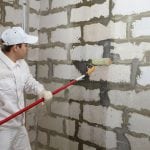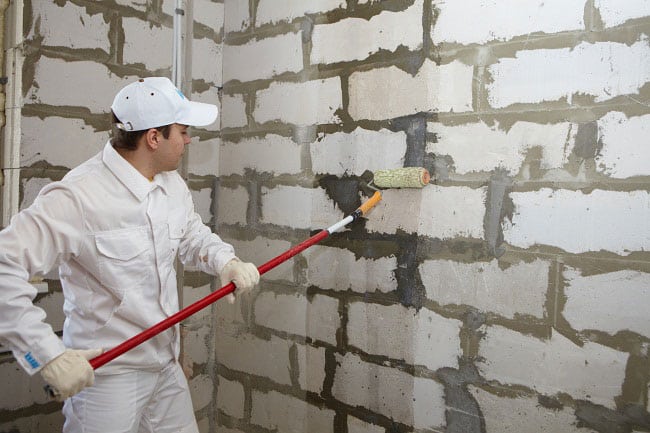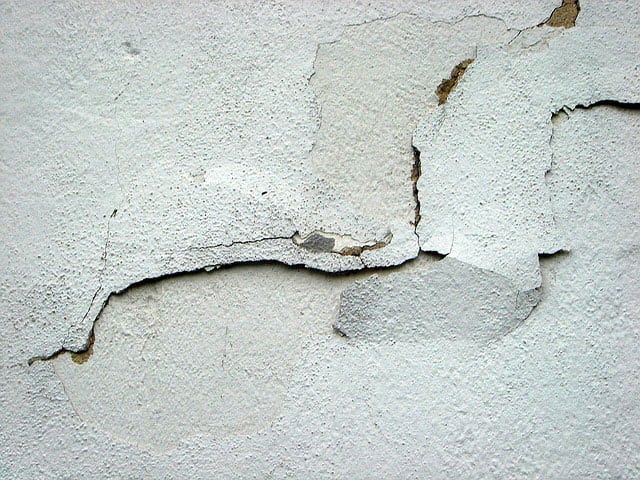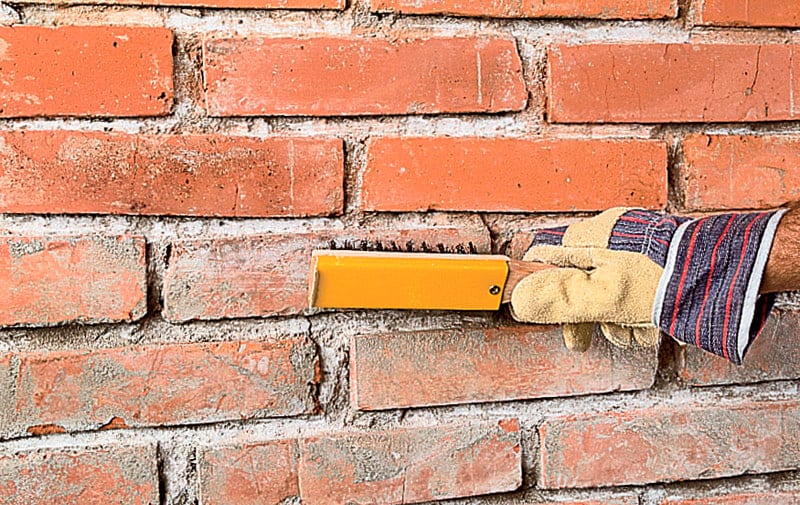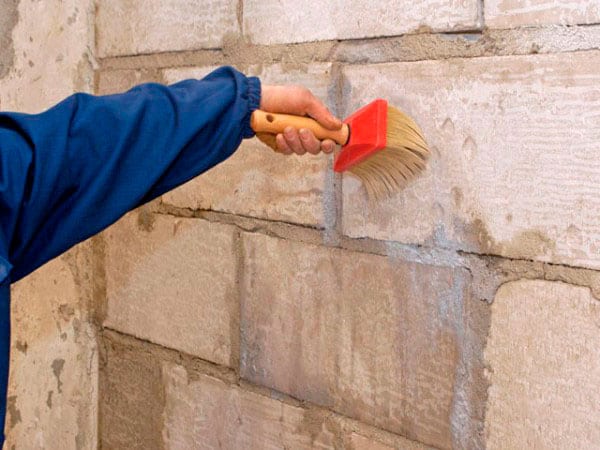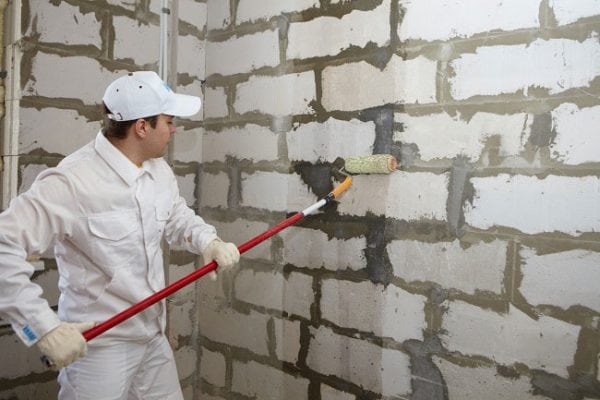When decorating walls or repairing them, several rules must be followed to create a durable and even surface. Before plastering it is necessary to cover the walls with a primer. The main objective of this material is to extend the life of the structure. The primer used for plastering is a liquid suspension that is colorless and odorless.
After applying it to the work surface, it dries, forming a protective film. It helps to improve the interaction of plaster with the wall, to give the structure additional strength. In addition, the penetrating ability of the composition allows it to fill the pores, increasing adhesion, improving anti-corrosion properties.
Therefore, the primer of the walls under the plaster is a profitable and correct solution when finishing the structure.
to contents ↑Primer properties
The film formed by the material in question is waterproof. This avoids moisture in concrete and other materials. In addition, its chemical composition helps to prevent mold, rot on the structure. This feature is the antibacterial properties of the substance.
The elements that make up the primer applied under the plaster increase the glossy effect of the surface, which allows you to hide defects. The application of several layers enhances the properties of the material.
The better the substance used, the more reliable the treatment will be. However, do not mix formulations from different manufacturers, as they may differ and do not fit together. As a result, the entire surface to be treated may begin to peel off or peel.
to contents ↑Types of primers
Before buying, you need to understand the types of solutions and their use. For each material, a specific type of primer is used for the plaster. The main ones are:
- Alkyd. Serves as the main element leveling the raw wooden surface. Before finishing wooden structures, it is recommended to use it. It dries quickly, preventing the wood from absorbing moisture. A polystyrene suspension can serve as a replacement, however, it contains harmful chemical elements that strongly affect the human body.
- Zinc These are common ground solutions to which zinc is added before use. They are great for metal structures. You can create such a suspension yourself by adding zinc oxide to a normal solution. Feature is excellent protection against corrosion. A replacement can be a glyphthalin mixture. True, its minus is a long hardening.
- Perchlorovinyl composition. Used for processing concrete. brick dries very quickly. However, it cannot be used when living indoors. This is due to the caustic components that make up the suspension.
- Emulsion and acrylic mixture.The most popular type. They are suitable for application to any materials. The absence of odor, the speed of hardening are the main advantages of such solutions. They can be applied to the surface without removing old layers of plaster before use. The composition penetrates deeply and strengthens the old coating.
to contents ↑
Priming method and work process
Regardless of what material is used in the finish, you need to consider several features of applying a primer to the surface. The compositions may have a different state of aggregation.
Manufacturers make concentrated, dry or ready-to-use solutions. The first two types must be diluted before use. For this, it is necessary to take into account the manufacturer's recommendations and correctly correlate the proportions.
It is very important to dilute the amount of mixture according to the time of work. Quick-drying formulations can lose their properties if applied after a specified time. Therefore, divide the amount of substance into portions, taking into account the speed of applying it to the surface of the structure.
Thoroughly clean old walls before processing. Treat all greasy marks with solvent. If it gets on the paint, the solution leaves noticeable spots. They are especially clearly visible in light, as they have a glossy shine.
Therefore, before starting work, close all areas on which the paint is applied. In the case of applying a primer to drywall walls, it is recommended to attach special mesh material to the joints. She is very caustic; use gloves when working.
During application, it is required to withstand a certain temperature of the mixture. Depending on the manufacturer, it may be different. However, it is almost always necessary that the temperature does not fall below +5 degrees Celsius.
First of all, apply the mixture to easily accessible areas so as not to waste time during which it can harden. Application is carried out in any convenient way: brush, roller. The number of layers is indicated by the manufacturer on the packaging. Note that the second coat is always applied until the first coat is completely dry.
When priming exterior walls, be aware that work must be carried out on a dry surface without direct sunlight. The rest of the process is no different from the interior decoration.
Plastering or painting is carried out a day after priming. If you do the work earlier, you can violate the characteristics of the material and its protective properties. Do not apply a direct coat of paint on top of the primer if, after running a finger over it, dirt remains. In such cases, the first layer of plaster is always applied, and after that the wall is painted.

